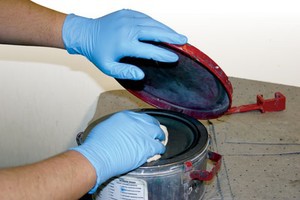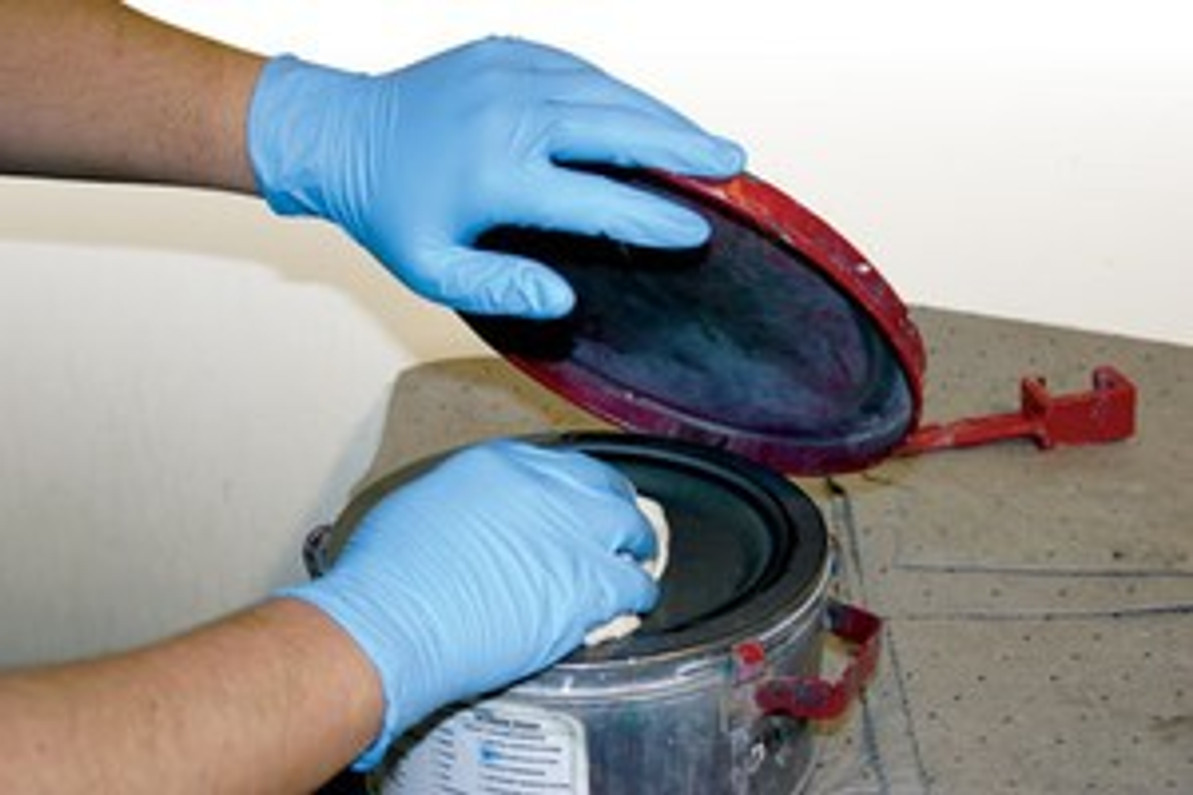Show Me What You're Made Of: Glove Effectiveness

A gardener gets ready to plant new additions on a hot summer day. A food worker washes her hands in preparation to fill an order. A janitor packs up his cart to start an early morning shift at a local high school. A stay-at-home mother grabs the first aid kit to patch up yet another backyard emergency. Right before picking up that first fist of dirt, seasoning the cutlet, filling the bucket, or pulling out that Batman band-aid, they stop-and put on gloves. It's nice to have a box of disposable gloves handy, like the Showa Best 6110PF Biodegradable 4-mil Nitrile Disposable Gloves. What these everyday people share is the need for an effective barrier between their hands and the potentially irritating elements they handle daily.
The need for sturdy gloves can be seen especially in the food, health and construction industries. The common environments found in these industries call for strictly sanitized and even sterile conditions. With the threat of contamination or infection always present, one of the most basic requirements for safety is washing your hands and donning gloves. To prevent cross-contamination and other instances of potential infection gloves have to be changed frequently and be made of sturdy material to protect your hands from chemical exposure, harmful solvents, oils, greases and other threats.
While latex gloves offer good dexterity, a snug fit and can withstand high temperatures, they can trigger severe allergic reactions in some people and offer little chemical protection. They tend to perform poorly with organic solvents and it can be hard to detect punctures. Polyethylene or vinyl gloves are usually the least costly, but have low heat tolerance and rip easily which makes them ineffective or even dangerous. They offer little to no protection against chemical hazards and microorganisms and are often ill fitting.
Nitrile gloves are durable, disposable, and provide the good dexterity, tactile sensitivity and fit of the latex glove, without the risk for allergic reactions. They are excellent general-use gloves protecting hands from solvents, whether organic, biological or water-based, greases, oils, and even some acids and bases. They can be used for both incidental and extended contact and are available at a moderate cost. Nitrile gloves are the most puncture resistant and tears or punctures are clearly visible if they do occur. Their versatility allows for them to be used for medical situations, hobbies, such as gardening, restaurants or other food handling environments, maintenance and car care.
The new biodegradable, EBT (Eco Best Technology) made gloves removes the biggest drawback of using nitrile gloves: being non-biodegradable. The latest formulation of nitrile gloves adds an earth conscious edge and helps decrease the huge waste of resources caused by billions of pairs of gloves being disposed of every single year.
Synthetic gloves will remain in a landfill permanently without decomposing while natural gloves take a very long time to decompose and emit harmful gases. Incinerators contribute heavy amounts of greenhouse gases, further deteriorating an already burdened planet. These new biodegradable nitrile gloves provide the opportunity to be eco-conscious without worrying about the amount of gloves being used. When it comes to showing what they’re made of, Showa Best 6110PF Biodegradable 4-mil Nitrile Disposable Gloves seems to be made of the good stuff, which is good news for your hands and the planet.
Recent Posts
-
Fire Safety in the Workplace: What You Need to Know
What steps are you taking to prevent fires in your workplace? According to the U.S. Occupational Saf …Aug 23rd 2023 -
Is It Safe to Go Jogging With a Cold Infection?
If you're suffering from a cold infection, you might be wondering whether it's safe to go jogging. T …Aug 22nd 2023 -
5 Safety Tips to Follow When Using a Powder-Actuated Tool
Powder-actuated tools are commonly used to join materials to steel and concrete. Also known as Hilti …Aug 20th 2023




